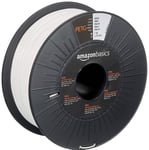What's Special?
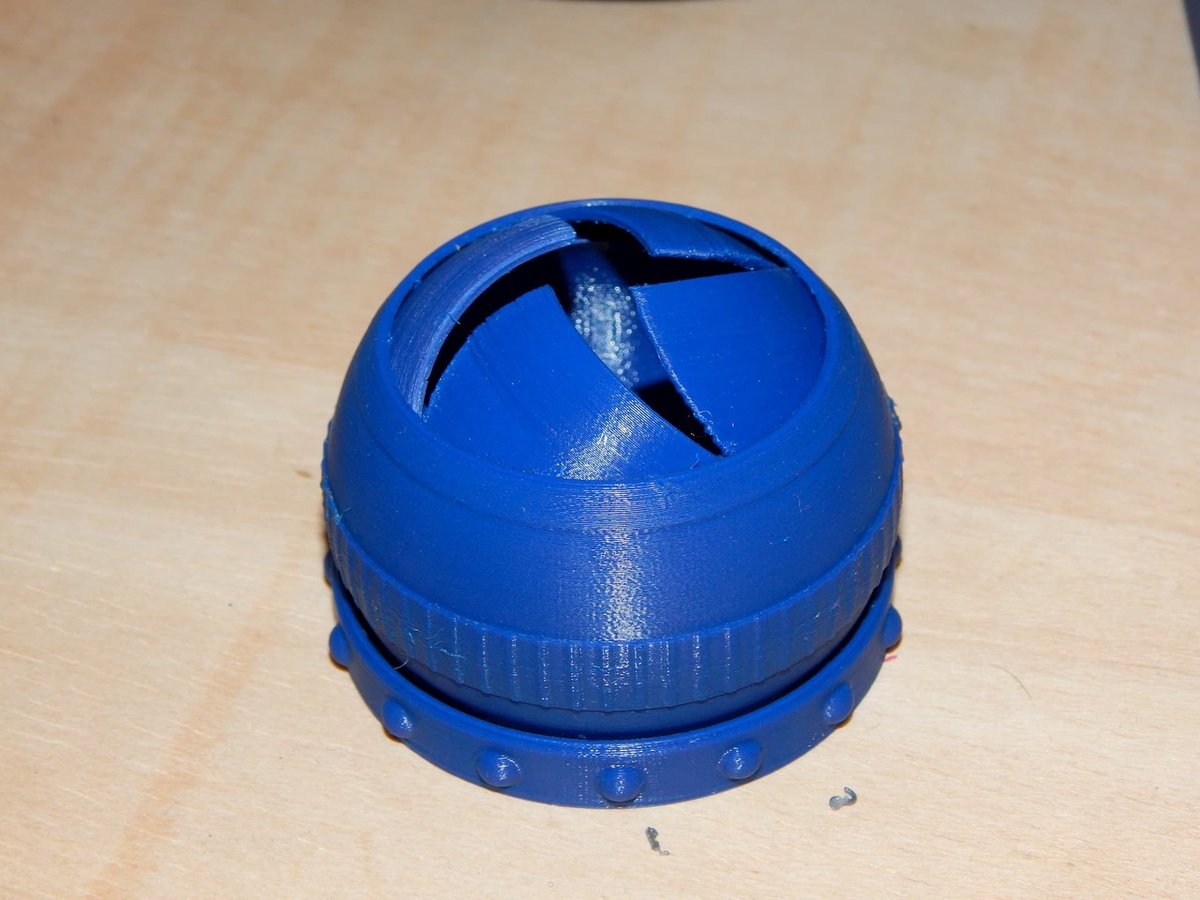
Pretty much everybody has heard of Amazon, the online retail giant. Recently, they’ve begun offering their own brand of filaments for 3D printing, marketing towards the everyday consumer and hobbyist.
The advantages of such a product are obvious: Amazon is a global company and well-known for its reliability. As the filament is their own product, it will always boast the impressively fast Prime shipping, and if you don’t like it, the Amazon return service is legendary. It’s also backed by an Amazon 1-year limited warranty.
As for the product itself, well, Amazon hasn’t skimped on quality. Given its plus or minus 0.05-mm precision and that it’s “specially engineered to reduce jamming”, this PETG filament sounds quite impressive right off the bat. Also, the spool itself has a very handy gauge on the side that allows you to approximate how much filament you have left – both in meters and by weight.
AmazonBasics PETG is offered in 1-kg spools, in both 1.75-mm and 2.85-mm diameters. There are a wide variety of colors available, from which we choose a spool of Blue.
The Verdict
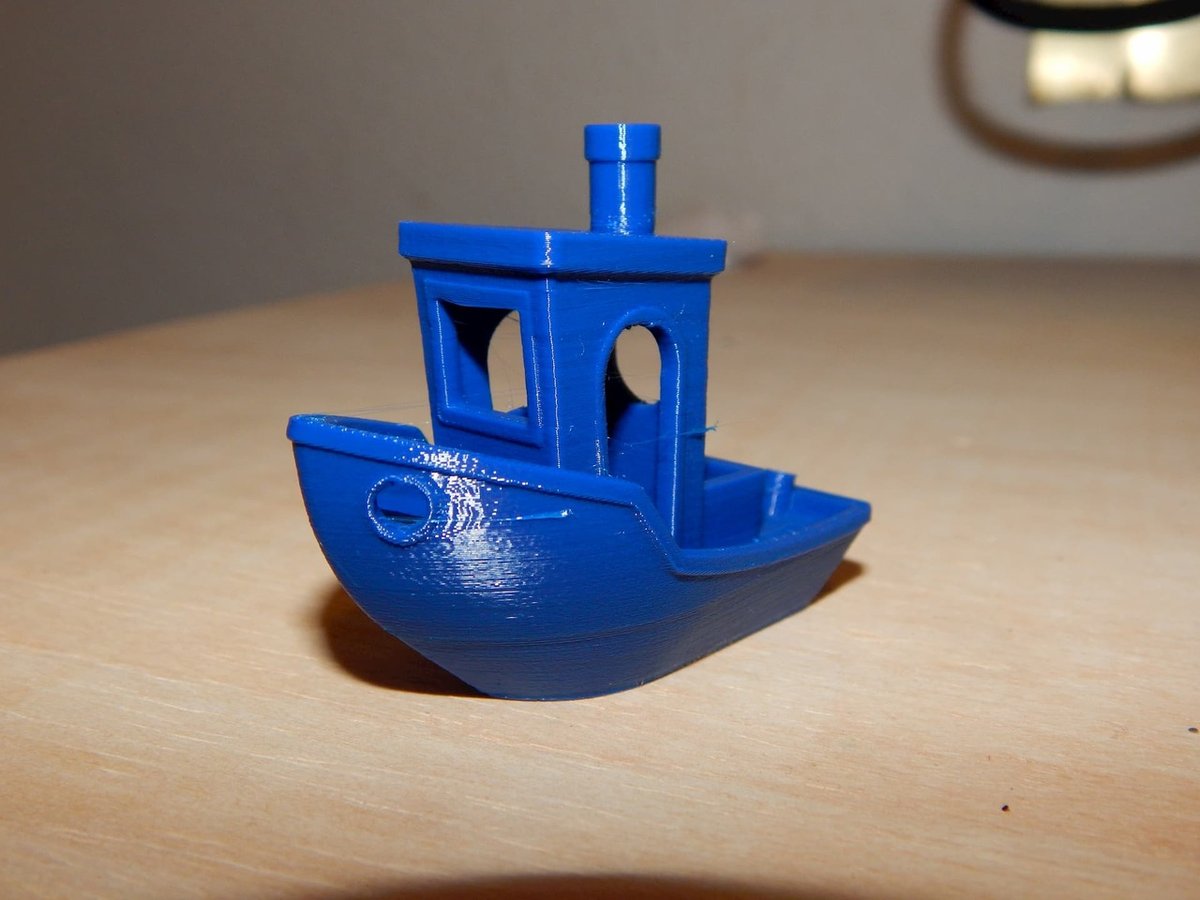
We tested out the AmazonBasics PETG on an Original Prusa i3 MK3. The spool came nicely packaged in a recyclable cardboard box. It was sealed in a plastic bag with a silica desiccant pouch to avoid damage from humidity. The bag was resealable, so the filament can be safely stored when not in use.
We had a bit of trouble getting prints to stick to the bed, as this material seems to like warping. A bit of gluestick seemed to help but wasn’t always perfect.
The finish of the prints is exceptionally smooth and shiny, and the color is a very vibrant, dark blue, indicating that the pigments are of a high quality. The material is quite opaque, with no light passing through.
Test #1: 3DBenchy
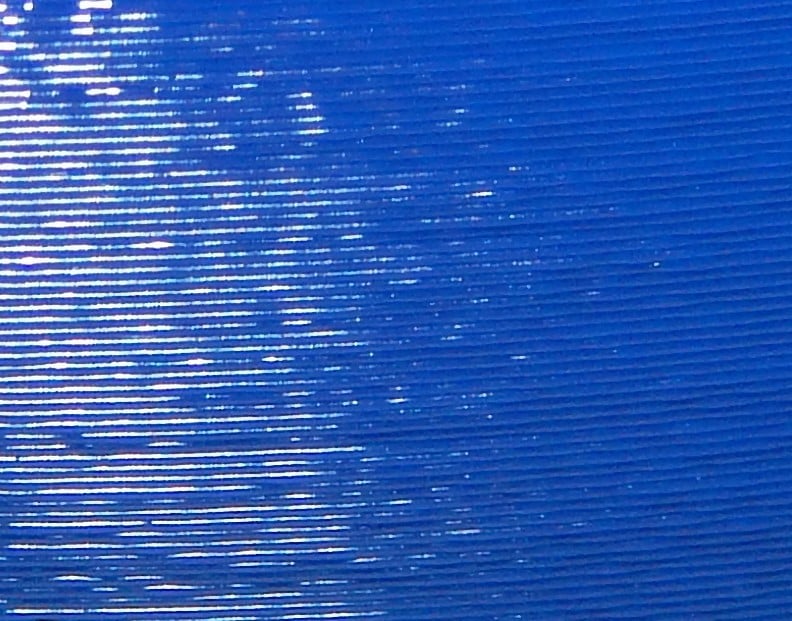
As usual, our first test print was the 3DBenchy. There was a bit of stringing between details, as is to be expected with PETG, but no major blemishes on the surface of the print.
We had a small amount of warping in the front of the boat, where it lifted slightly off the print bed, but otherwise, the print finished very successfully.
Our close-up photo reveals smooth, consistent layers throughout the print.
Test #2: Headphone Holder
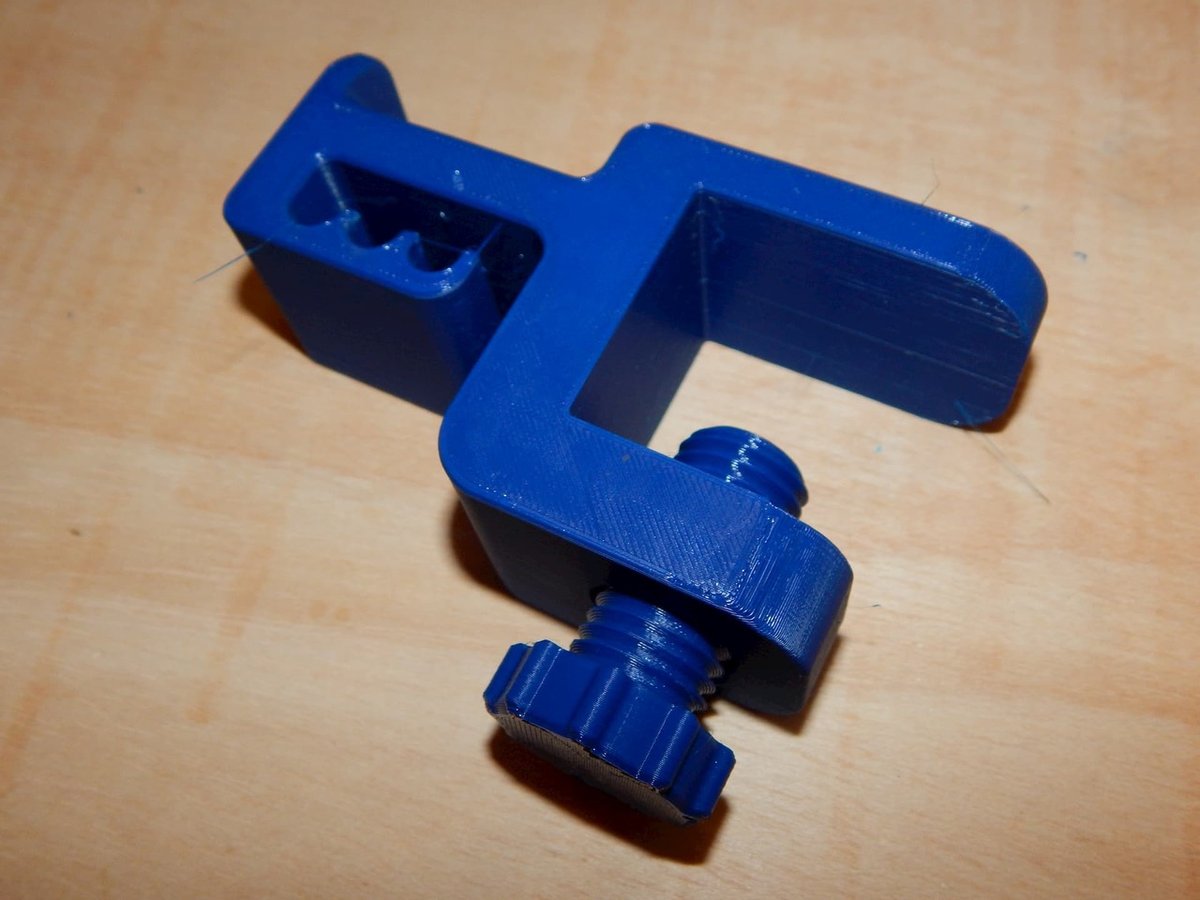
Our second test was a desk-mount headphone holder clamp by mistertech on Thingiverse.
The whole print turned out very nicely, and the screw threaded easily and without issue on the first try.
There was a little bit of stringing in this print as well, but like the Benchy, nothing that impacts the quality of the print itself. For this print, we used a small amount of gluestick on the bed, which seems to have prevented any warping.
Test #3: Print-in-Place Iris Box
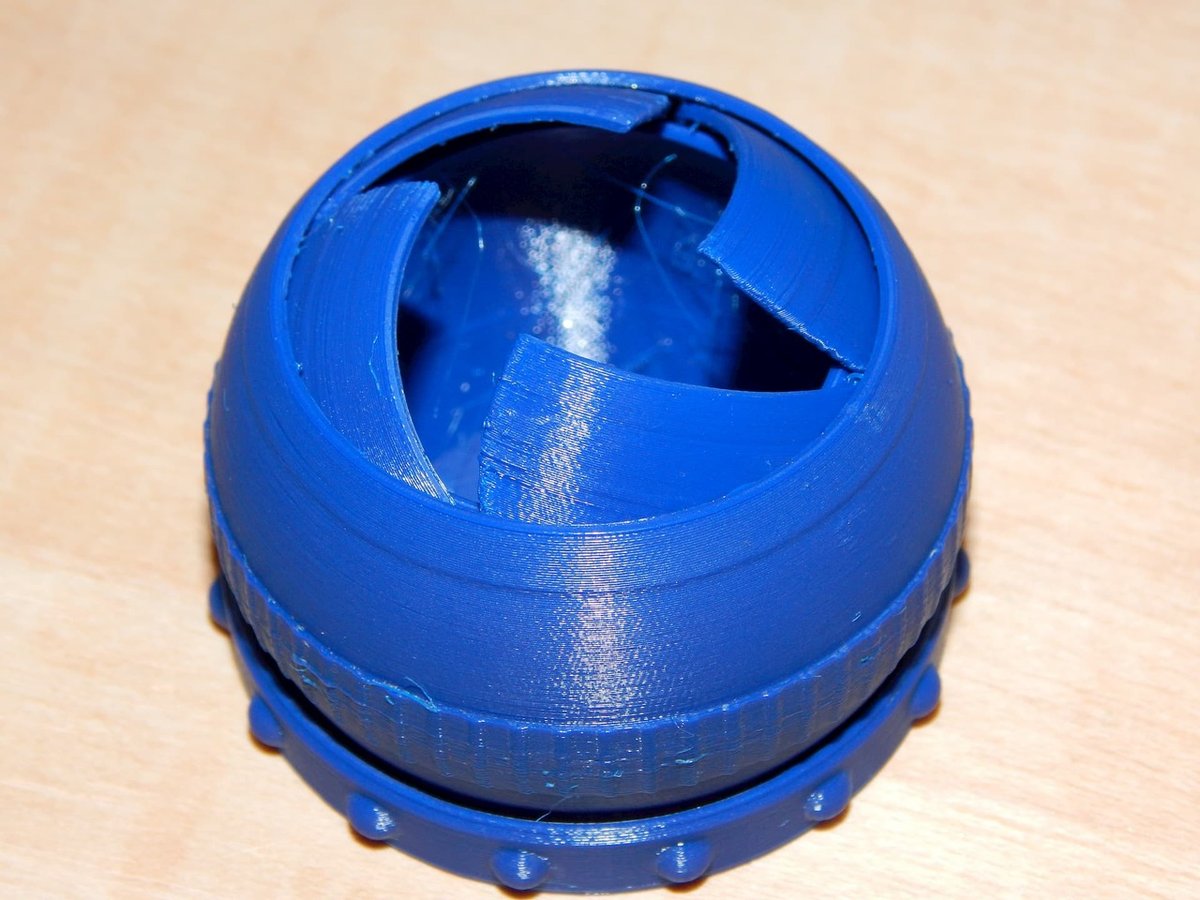
Bolstered by our success with the headphone holder, we decided to challenge ourselves by printing the remixed Print-in-Place Iris Box by LoboCNC.
This print wasn’t the best on earth, but it does function fairly well. We had some trouble “cracking” the mechanism, and there was quite a large amount of stringing, especially inside the container.
However, the external finish is very nice, and the actuation, if a bit rough, doesn’t catch too badly at any given point.
Final Thoughts
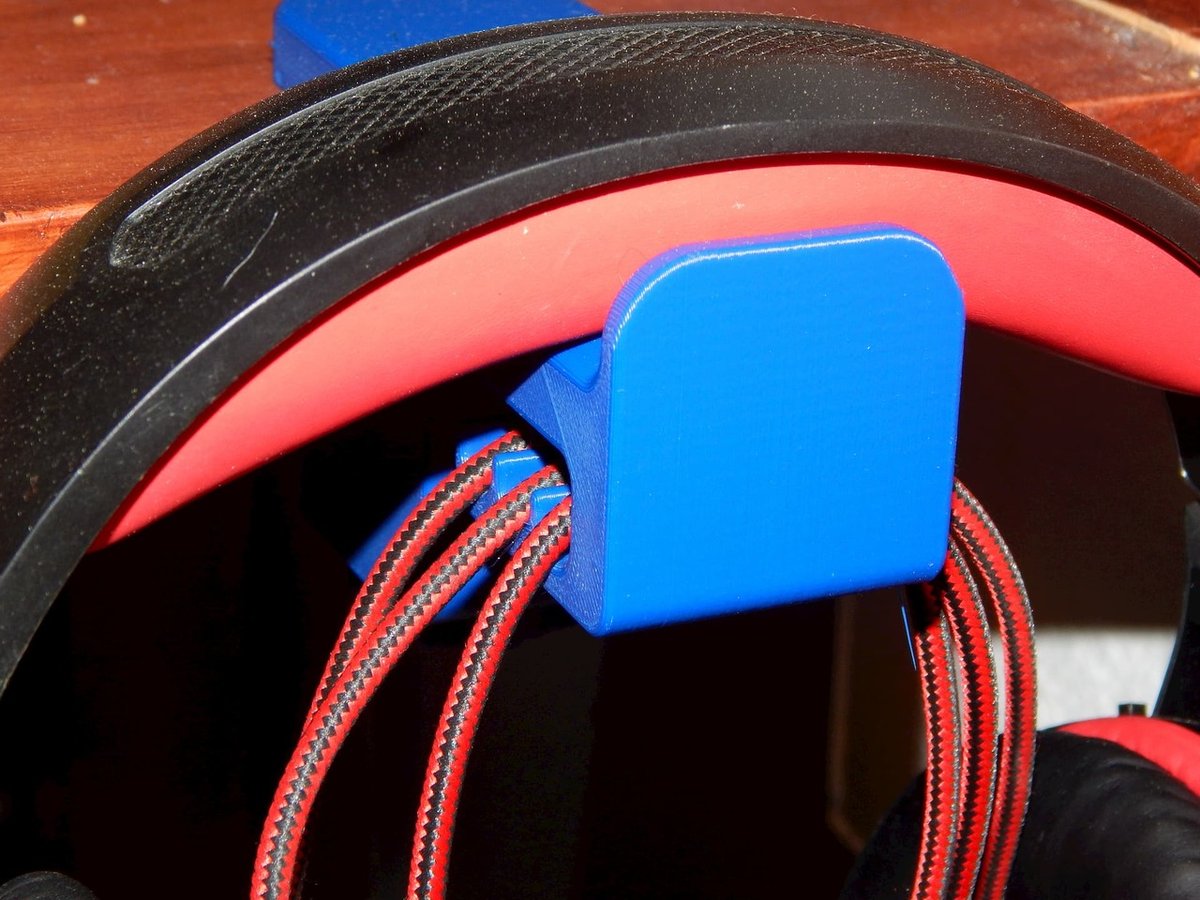
Overall, this filament is easy to work with and provides decent quality results without too much hassle.
While it does have a slight issue with sticking to the bed, this is easily corrected with a little extra adhesive before each print. No other issues were found while using this material.
The color is very vibrant, and the surface finish of the prints is exceptionally smooth and shiny. We printed our test models using default presets in Slic3R PE, with changes to the print temperatures (see below). All prints were completed successfully on the first try, using a Prusa i3 MK3S as our test printer.
So, if you’re looking for a cheap material with more performance than PLA and few of the issues of ABS, this filament is certainly worth a try.
Specs & Settings
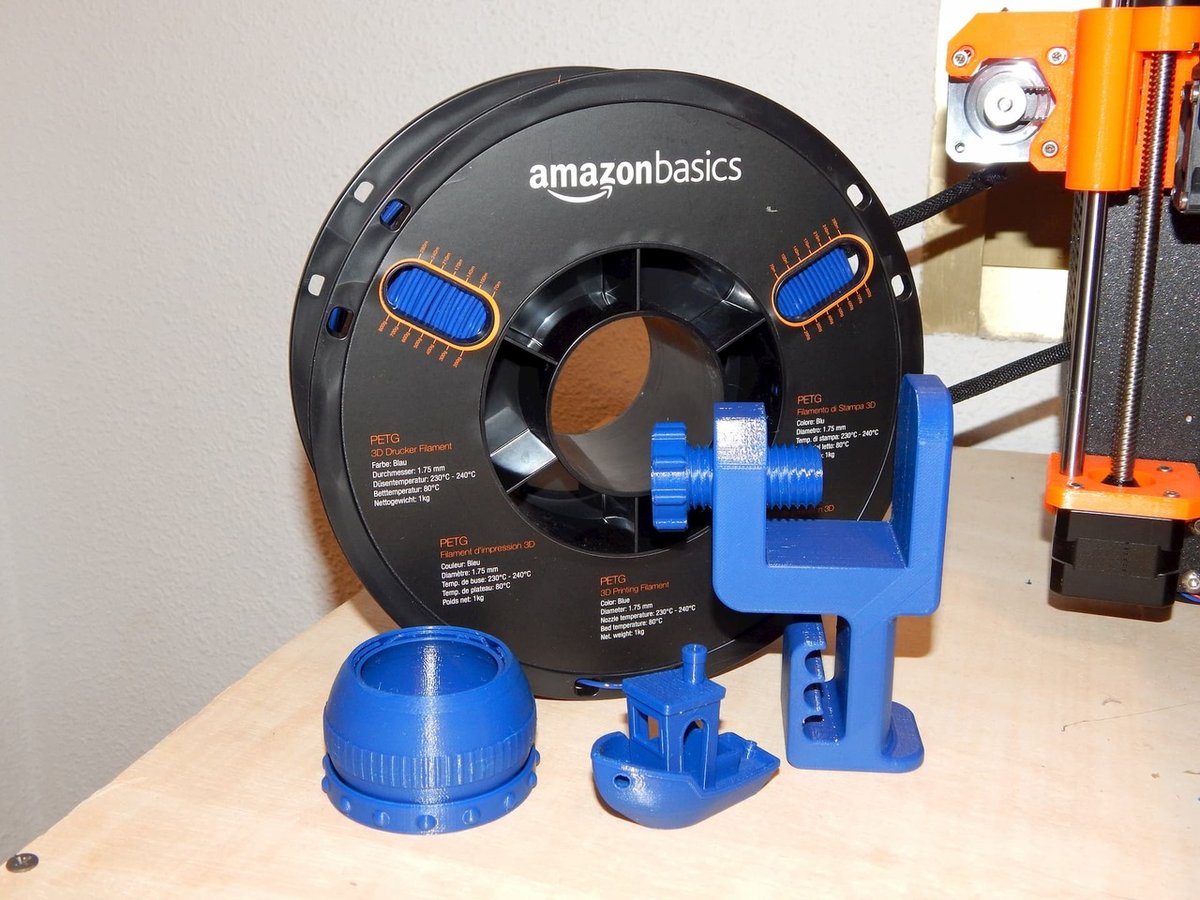
As this is a PETG, it will print fairly easily compared to ABS but is still slightly trickier than PLA. Nevertheless, with a few tweaks and some fiddling, the results will likely go from good to great.
We printed using the “Generic PET” and “0.15mm Quality MK3S” settings in Slic3r PE, with the following changes:
- Nozzle temperature: 235 °C
- Bed Temperature: 80 °C
The manufacturer’s specs and settings are as follows:
- Nozzle temperature: 230–240 °C
- Bed temperature: 45–55 °C (not required)
- Filament diameter: 1.75 or 2.85 mm
How We Review
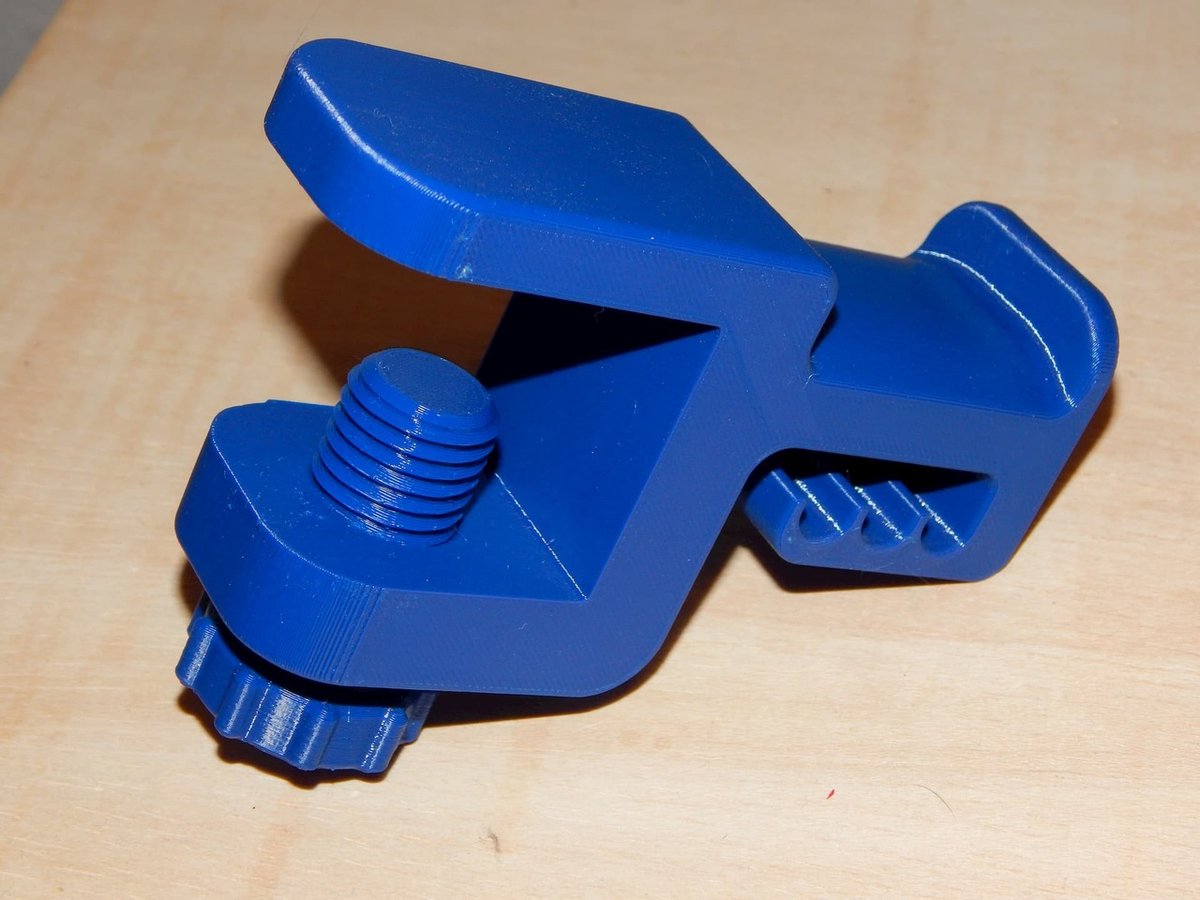
We review filaments using the following guidelines.
Each and every spool is brand-new and unopened.
Our first print is always a 3DBenchy; we use this to check for any inconsistencies in quality, color, and finish. After that, we print a few other models, the results of which we present to you. We do our slicing using the latest version of Slic3r Prusa Edition. We do not post-process the prints in any manner, we simply remove them from the bed and cut off any support materials.
For printing, we start with the manufacturer’s recommended settings (where available). When the manufacturer offers a range of values, we go for the arithmetic mean. For example, if we are given a printing temperature range of 200–220 ºC, we would print at 210 ºC (unless noted otherwise).
For this review, we used an Original Prusa i3 MK3S in stock configuration. Statements regarding print quality are based on the printer’s ability and reputation to successfully print a wide variety of other filaments and models.
We would like to mention that every spool of filament can be slightly different, and filaments often vary greatly even within a small range. Simply fiddling with a single setting like retraction can have huge effects in print quality; this can make the difference between a disastrous fail and a wondrous success. So, if you own a spool of this filament, we invite you to contribute in the comments below! Did you manage to get your prints to turn out? Did you have an interesting or strange experience? Let us know — we’d love to hear from you!
Feature image source: Emmett Grames / All3DP
CERTAIN CONTENT THAT APPEARS ON THIS SITE COMES FROM AMAZON. THIS CONTENT IS PROVIDED ‘AS IS’ AND IS SUBJECT TO CHANGE OR REMOVAL AT ANY TIME.
